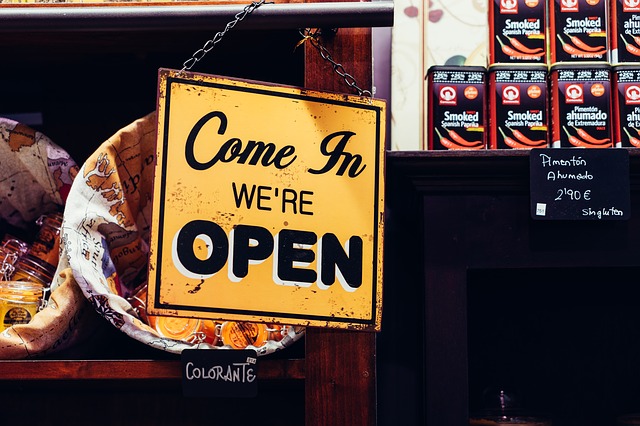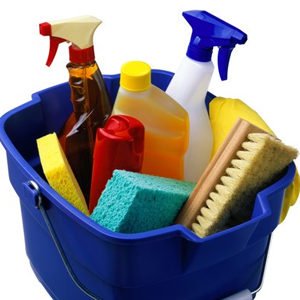Things to Consider Before Reopening Your Business After COVID-19

The coronavirus pandemic has created unimaginable difficulties for many businesses. As states begin the reopening process, business owners must navigate these challenges to minimize damages to the lives and livelihoods of themselves and their employees. Making this possible means considering factors you might not have thought about.
The hard part: your guidelines for reopening will differ depending on your state. To make matters worse, the Occupational Safety and Health Administration (OSHA) has not provided a standard of rules for employers regarding employee safety measures in a post COVID-19 workplace. This leaves businesses vulnerable to possibly legal trouble without the proper precautions.
However, keeping your business and employees safe as you reopen doesn’t have to be that complicated. Prepare your workspace, maintain social distancing standards, and adapt your employees to the new normal for a thriving workplace after COVID-19.
Here’s how to start reopening your business safely.
Preparing your workspace
Before returning to the office, business owners should take steps to ensure the safe and proper functioning of the workplace. If your building has sat quiet for some time, there are maintenance tasks you need to do before resuming the old routine.
Follow these steps to guarantee a work environment that considers the wellbeing of your employees:
Conduct building reopening tasks
An office building that has been more or less empty for months at a time needs certain maintenance before a safe reopening. Centers for Disease Control and Prevention (CDC) warn against the dangers of mold and Legionella in a building that has been unoccupied for a time. To help combat these dangers, check for mold and flush your water lines before reopening.
Design a new office layout
The old layout of your pre-COVID office might not serve the social distancing recommendations needed to keep you and your employees safe. Before sending everyone back to the workplace, create a new design plan for desks, breakrooms, and more to make it possible for everyone to maintain a 6-foot distance.
Furthermore, you can help enhance new layouts by using floor stickers or awareness posters promoting COVID guidelines. It can be useful to install transparent shields or other physical barriers where possible to separate employees and visitors where social distancing is not an option.
Set up sanitization stations
In redesigning the layout of your office, you should consider implementing sanitization stations where your coworkers can quickly and easily wash their hands. Ensure these designated areas of the office have the cleaning supplies needed to wipe down desks. If possible, keep them stocked with hand sanitizer and disposable face masks.

Determine cleaning procedures
The CDC states that the coronavirus has not been shown to live on surfaces for longer than 7 days. If your building has been unoccupied for at least that long, you only need to conduct your normal cleaning routine. After that, you want to implement procedures for periodically cleaning porous and non-porous surfaces with the correct disinfectant products. Follow the CDC’s recommendations for properly disinfecting.
Revise your plan as needed
As you begin the process of reopening, you may find that the layout or procedures you planned aren’t working out quite as intended. Keep revising to ensure you and your coworkers have a safe and clean workspace
Reopening your business after COVID-19 means a new set of policies and procedures for your office. You may never have expected to leave your building dormant for a long period of time, but by undergoing a few simple maintenance tasks and planning for a sanitary future, you can keep yourself and your employees safe and comfortable.
Maintaining social distancing standards
Working in shared spaces after the COVID-19 shutdowns presents challenges you never thought you’d have to face. How do you ensure employees can maintain a distance of six feet from one another while working in a small office? What do you do about break rooms and common-use equipment?
Start by adjusting your workplace policies to accommodate the new normal. Here are just a few suggestions for social distancing and sanitation rules:
- Provide personal supplies to reduce shared items.
- Schedule staggered break times to keep employees from congregating in one place.
- Determine and maintain clear facemask rules.
- Post clear rules for cleaning common-use machines like copiers or exercise equipment after each use.
You can reduce risk to employees, but it will take a thorough integration of a new set of rules. Have them prepared in advance.

Adapting to the new normal
COVID-19 has shaken up life for millions of people across the world. With widespread uncertainty about post-COVID job prospects, fear and low morale are commonplace. Help your employees adapt to the strangeness of the new normal through flexibility and technology.
Starting off, it may be easier to slowly transition your coworkers back, allowing for remote work for those who are able. Even when hiring new employees, you can conduct the onboarding process remotely to reduce risk in the office. Giving the members of your team options when it comes to adjusting safely can help smooth their transition back to a physical workspace.
Educate any employees working from home on how to check their cybersecurity. Make sure they have the tools they need to comfortably continue to work remotely or to begin the journey back into office life. Then, prepare them for a new workspace with consistent social distancing and sanitization rules.
Whether you are beginning to reopen your old business or searching for a new job altogether, there’s a new normal for business owners and employees to navigate. Consider the workspace preparation and social distancing rules you’ll need in place before you head back to work, and remember to play it safe.
This guest post was authored by Brooke Faulkner

Brooke Faulkner is a writer, mom and adventurer in the Pacific Northwest. She spends her days pondering what makes a good leader. And then dreaming up ways to teach these virtues to her sons, without getting groans and eye rolls in response.

